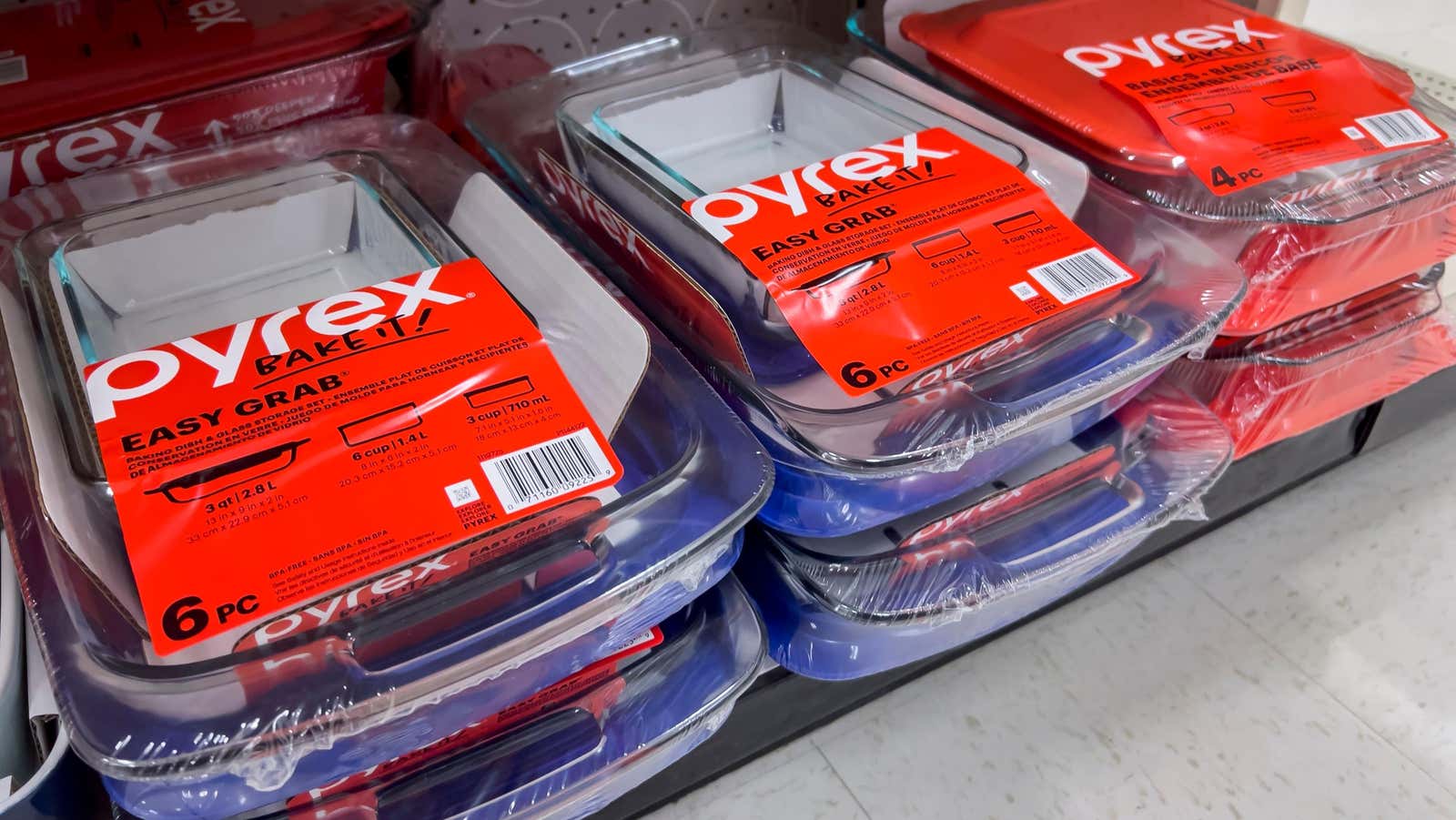This Viral PYREX Brand Hack Is Bullshit Guys

Everyone loves a good kitchen hack, and one of the most popular examples involves glassware. There are hundreds of posts on Twitter , Reddit and TikTok claiming that PYREX written in all caps is good (aka borosilicate glass) and Pyrex written in all lowercase is rubbish (aka tempered soda lime glass) . If you stick to PYREX branded products, then you won’t have to worry about your casseroles exploding all over your kitchen , potentially injuring you and your loved ones in the process.
This kind of hack is designed to go viral: it touches on an important home security issue, it seems a bit conspiratorial, and immediately resonates with just about everyone who has set foot in the kitchen before. Unfortunately, this is also bullshit. You can’t tell what material your glassware is made from by looking at the brand name, and if you read quotes that purportedly prove you can, you’ll understand why.
Everyone cites the Wikipedia article on Pyrex as proof that the capitalized brand is better, but when you actually read the text of the article, things aren’t that simple. Corning Inc. registered the original U.S. trademark – PYREX in all caps – in 1915, when they made exclusively borosilicate glass products. The company introduced the lower case trademark in 1975, about 20 years after the brand had already begun experimenting with tempered soda-lime glass in its products. This means that soda lime products under the brand name PYREX exist, as the Wikipedia article directly confirms:
“Both trademarks, PYREX (all uppercase) and pyrex (all lowercase, introduced in 1975 [1] ), have been used interchangeably in marketing cookware made from both borosilicate and soda-lime glass [2] in addition to the appropriate accessories, for several decades.”
If you buy vintage PYREX made before 1975, it may be borosilicate, but it may also be hardened soda lime. Anything made in the “several decades” after 1975 could fall under any of the four possible material and brand combinations, because Corning, Inc. used these two trademarks interchangeably and is not required to indicate what their products are made of.
So how do you know if you’re dealing with “real” Pyrex? It is generally safe to simply assume that you are not, at least if you are in the United States. The “real things” have not existed in the US market for at least 30 years. Pyrex began phasing out borosilicate glass in the 1950s and ended its use entirely by 1998 when World Kitchen (now Corelle Brands) bought the license for the PYREX and pyrex brands. Unless you buy glassware from a vintage store that can prove it was made in the 1940s or earlier, you are unlikely to find borosilicate glass pyrex.
This doesn’t mean you can’t get borosilicate cookware – it just means you can’t get it under the pyrex brand. As Reddit user Giant_Meteor_2024 points out in a 2018 thread about PYREX branding , the labware is made from borosilicate glass: “If you don’t mind microwaving a 500ml beaker instead of the fancy PYREX thing, they can be found on the cheap.” (You may not be able to find baking labware.)
If you’ve read a few horror stories about exploding pyrex, you might not be entirely thrilled about using tempered soda-lime glass – and, frankly, rightly enough. But this is not inherently dangerous; it becomes such only when it is subjected to sudden, direct and strictly localized changes in temperature. To give you an example of what that means, in college my friends and I managed to blow up a Pyrex pot of mac and cheese because we left it sitting on the stove next to an electric burner, but not on it. One of us decided she wanted coffee, turned on the burner under the kettle, and returned to the living room. A few minutes later, we heard a loud bang and went into the kitchen, where the crime scene was waiting for us, littered with shards of pyrex and macaroni and cheese. Being in close proximity to a hot electric burner was too much temperature shock for the glass and it exploded.
This is the kind of situation you should avoid when cooking with soda-lime glass. You can put a Pyrex dish that has just been in the fridge or freezer into a preheated oven on a wire rack; placing it directly on a pre-heated pizza stone, pan, or baking steel is absolutely unacceptable. Likewise, placing a hot Pyrex pot on a very cold and/or damp surface is a bad idea, as is pouring boiling water into it. But if you avoid extreme temperature shocks, it can be used. It’s been 15 years since I cleaned the brush with exploding pyrex and I still use it every day.